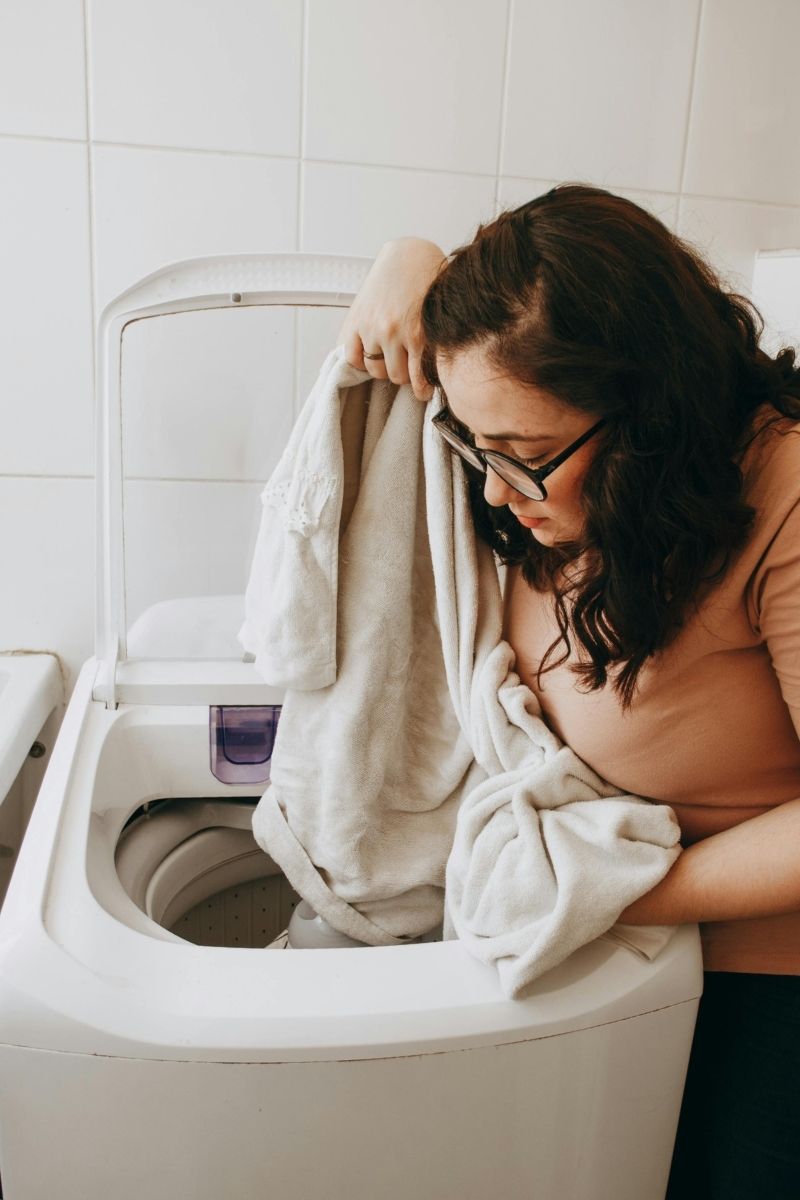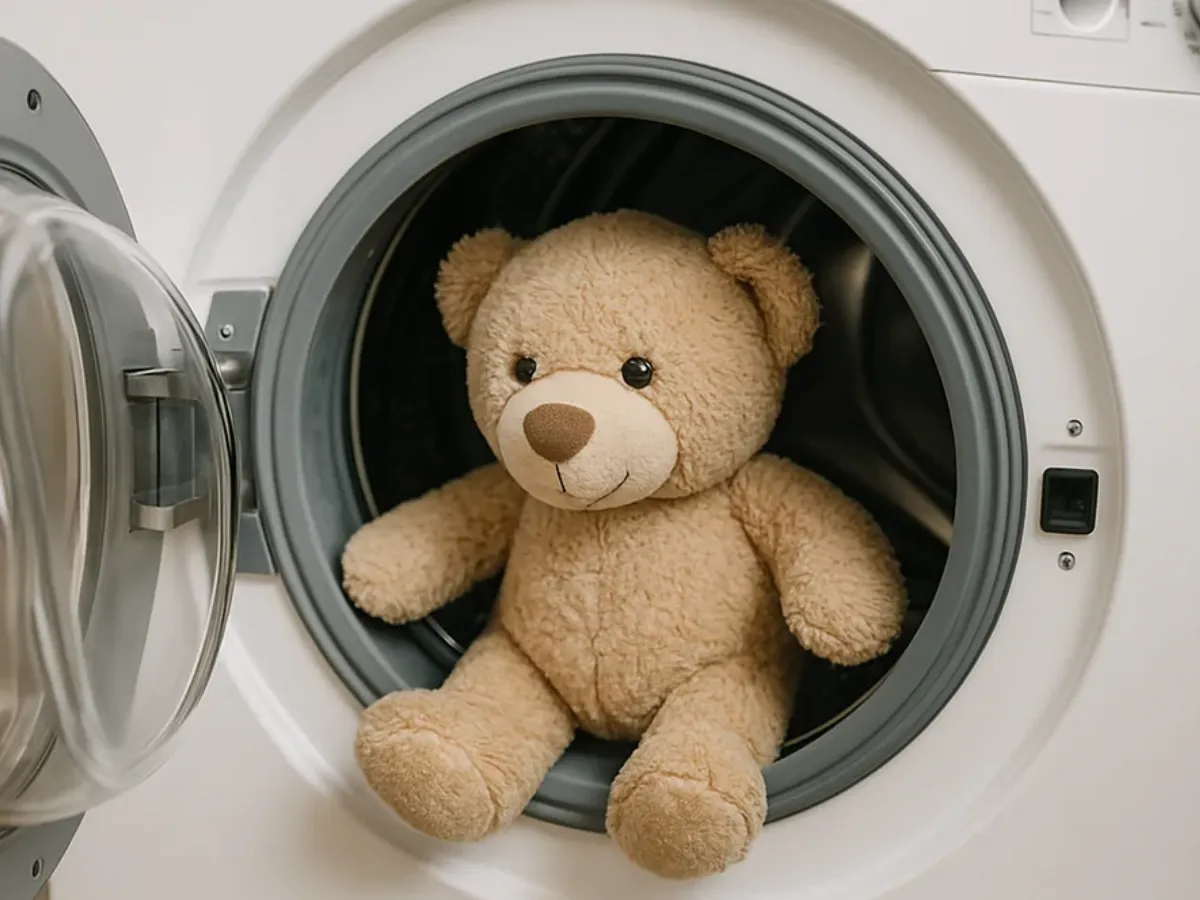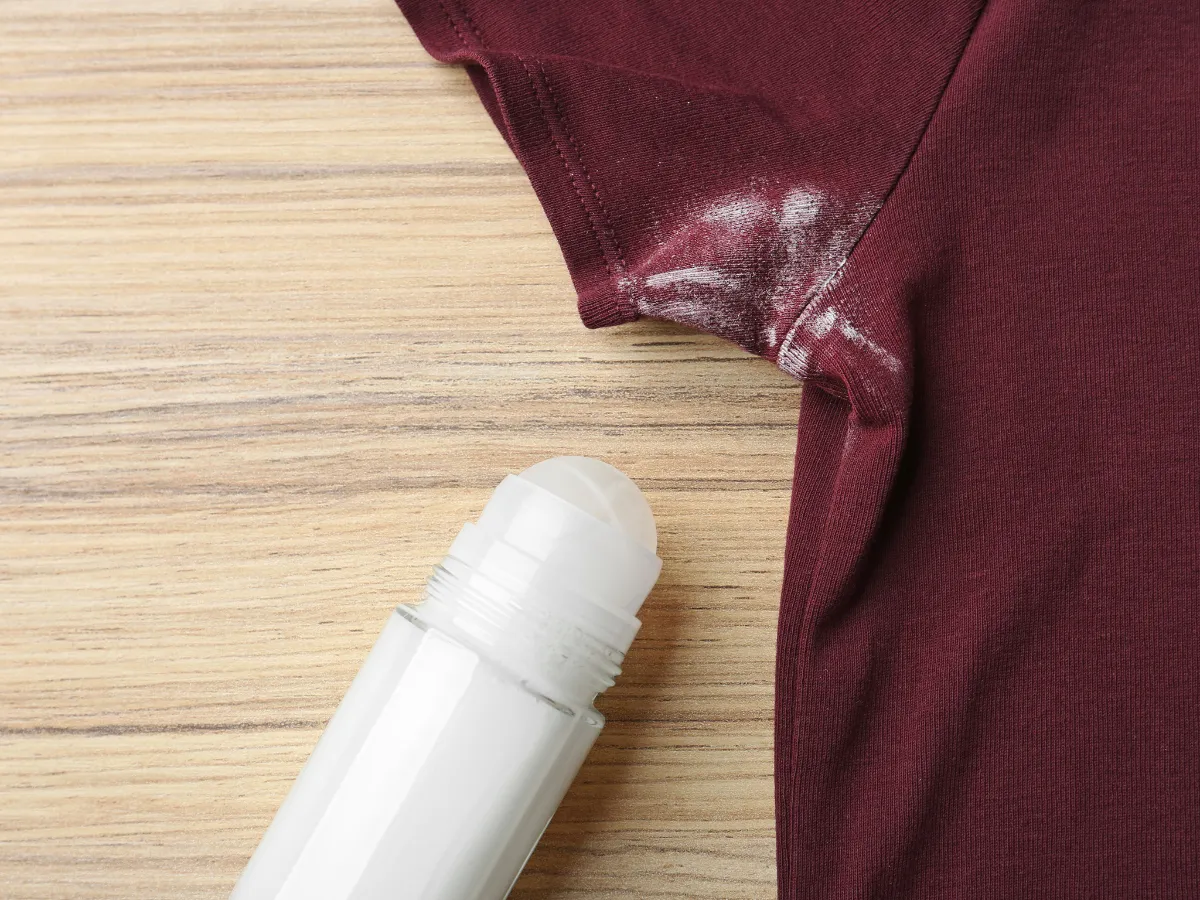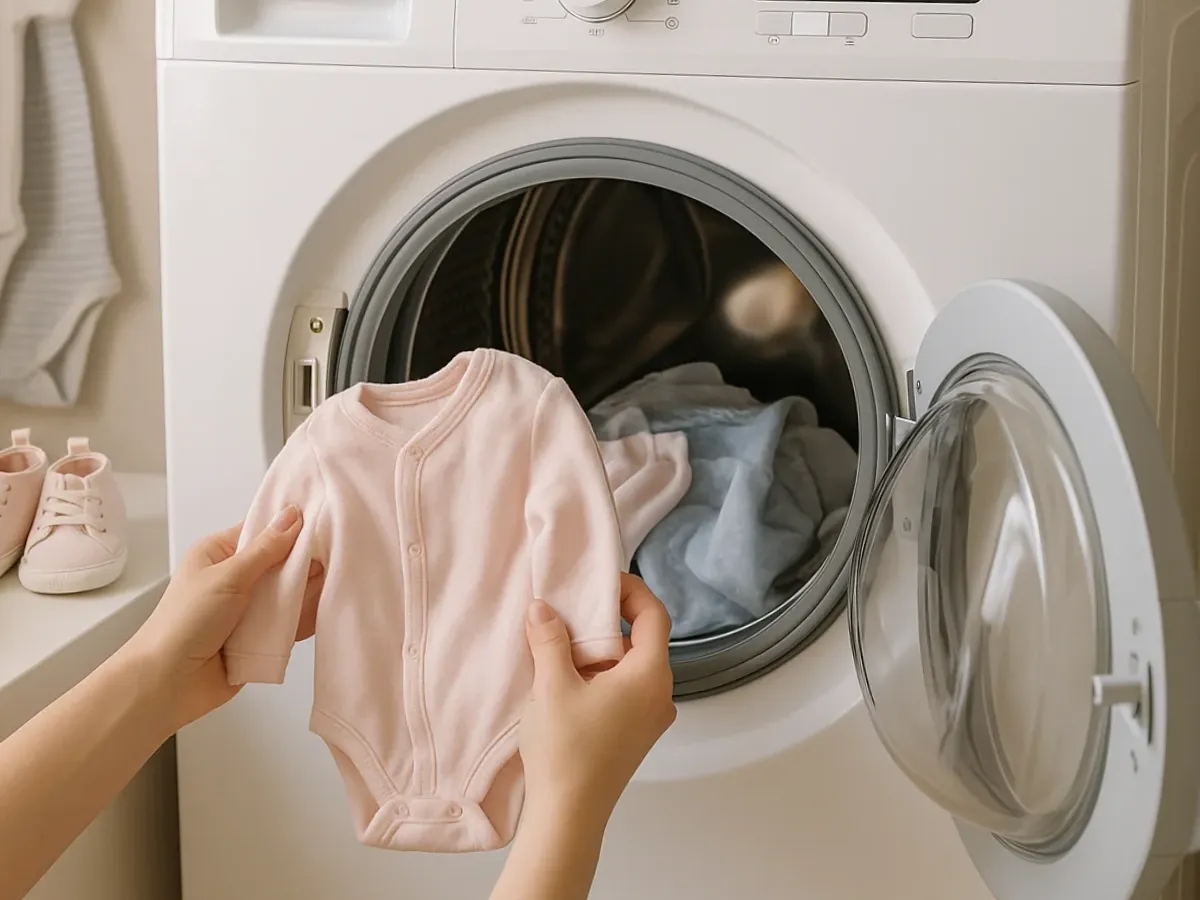Complete Guide: How to Wash White Clothes in the Washing Machine for an Impeccable White

White clothes have a special charm: they convey cleanliness, freshness, and elegance. However, maintaining that radiant white wash after wash can become a real challenge. Over time, white garments tend to acquire a grayish, yellowish hue or stain easily. But don't despair! Knowing how to wash white clothes in the washing machine correctly is the key to preserving their luminosity and extending their lifespan.
In this definitive guide, we will reveal all the secrets, from initial sorting to tricks with whitening additives, including choosing the right program and temperature. Follow these tips and make your white clothes look like new again.
The First Commandment: Separate, Separate, Separate!
It may seem obvious, but it's the most common mistake and the one that causes the most damage. Always wash white clothes separately from colored clothes is absolutely essential. Even a single colored garment, no matter how light, can bleed slightly and transfer dye to your whites, leaving them dull or with an unwanted grayish tone.
But the separation doesn't end there. For optimal washing, also consider:
- Separate by fabric type: Washing thick cotton towels is not the same as washing delicate white silk blouses. Grouping similar fabrics allows using the appropriate cycle and temperature for each without damaging the more sensitive ones.
- Separate by soil level: Wash heavily soiled items (like work or sports clothes) separately from those that only need refreshing. This prevents extreme dirt from redepositing onto cleaner garments and allows using more intense cycles or prewashes if necessary.
Pre-Wash Preparation: Don't Skip These Steps!
Before putting white clothes in the washer, good preparation makes a difference:
- Check Labels: Confirm the specific washing instructions for each garment. Pay attention to the maximum temperature, whether bleach is allowed, etc. Deciphering washing labels is essential.
- Pretreat Stains: Inspect each garment for stains (collars, cuffs, underarms, food stains...). Apply a specific stain remover or a suitable home remedy for the type of stain *before* putting it in the wash. Letting the product work according to its instructions will greatly increase the chances of removing the stain.
Stubborn yellow stains? We have a specific guide on how to remove yellow stains from clothes.
- Empty Pockets and Close Zippers: Avoid unpleasant surprises or damage to clothes and the washer.

Loading the Washer: Balance is Key
Do not overload the washing machine. Clothes need space to move freely inside the drum, allowing water and detergent to penetrate properly and dirt to be effectively removed. An excessive load results in poor washing and incomplete rinsing, which can leave residue and dull the whites.
As a general rule, you should be able to fit your hand vertically into the top of the drum once loaded.
The Right Detergent: Your Ally for Whiteness
- Detergent for Whites: Opt for a detergent specifically formulated for white clothes. They often contain optical brighteners (which make clothes appear whiter under UV light) or even oxygen-based bleaching agents.
- Powder vs. Liquid: Powder detergents are often slightly more effective for heavily soiled white clothes or removing certain stains, as they frequently contain more stable bleaching agents. However, liquids dissolve better in cold water. Choose based on your preferences and the type of wash.
- Right Amount: Follow the manufacturer's instructions based on load size, soil level, and the hardness of your local water. Using too much detergent is counterproductive: it doesn't clean more and leaves residues that attract dirt and dull the whites.
The Ideal Temperature: Cold, Warm, or Hot?
Choosing the water temperature is crucial and depends on the fabric type and goal:
- Hot Water (60°C/140°F or higher): Ideal for durable 100% white cotton items like sheets, towels, and underwear (as long as the label allows). Hot water is very effective at killing germs, dust mites, and removing body soils (sweat, oils), maintaining a hygienic and bright white.
- Warm Water (30-40°C / 86-104°F): A good option for moderately soiled everyday white clothes, synthetic fabrics, or blends. Cleans effectively without being as harsh as hot water.
- Cold Water (Below 30°C / 86°F): Recommended for delicate white garments (like silk or lace), to prevent certain stains (like blood) from setting, or simply to save energy. May require specific cold-water detergents or the use of boosters to achieve maximum whiteness.
In summary: Prioritize hot water for disinfection and maximum whiteness on durable fabrics, but always respect the label and use cold/warm water for delicate items.
The Wash Program: Which One to Choose?
Modern washing machines offer multiple programs. For white clothes:
- "Cotton" or "Whites" Program: Usually longer cycles with higher temperatures (adjustable), ideal for durable and soiled white clothes.
- "Normal" or "Synthetics" Program: Suitable for most everyday white clothes at warm temperatures.
- "Delicate" or "Hand Wash" Program: Essential for delicate white garments, with low temperature and gentle spin.
- Prewash?: Useful for heavily soiled clothes (dirt, grease). Consider if using prewash in the washing machine can improve the final result.
Whiteness Boosters: Extra Tricks
In addition to detergent, you can add these products for an even more dazzling white:
- Baking Soda: Add half a cup directly to the drum. It helps soften water, neutralize odors, and boost the detergent's action, resulting in brighter whites. Safe for most fabrics. Learn more about washing clothes with baking soda.
- White Vinegar: Pour half a cup into the fabric softener compartment during the final rinse. It removes soap residue (which dulls whites), acts as a natural fabric softener, and helps keep the washer clean. The vinegar smell disappears upon drying.
- Sodium Percarbonate: The "oxygen bleach". Add 1-2 tablespoons to the drum with the detergent. It's excellent for removing organic stains and restoring whiteness without chlorine. Works best with warm or hot water (minimum 40°C/104°F). Ideal if you want to restore lost whiteness.
- Bleach (Sodium Hypochlorite): The most powerful whitener, but also the harshest. Use only on durable 100% white cotton or linen, and always diluted according to instructions (never directly on clothes). Do not mix with other products (especially ammonia or vinegar). Overuse can yellow clothes or weaken fibers. More details on how to whiten clothes with bleach.
The Finishing Touch: Rinse and Spin
- Extra Rinse: If your washer has an extra rinse option, use it for white clothes. It ensures complete removal of detergent residue.
- Spin Cycle: Adjust the spin speed according to the fabric. A high spin (1000-1400 rpm) is good for towels and sheets as it removes more water and speeds up drying. For more delicate items, use a low spin (400-800 rpm) to prevent damage and excessive wrinkling.
Drying: The Final Step Towards Perfection
Proper drying also contributes to maintaining whiteness:
- Remove Clothes Promptly: Don't leave damp white clothes inside the washing machine, as they can develop bad odors or even mold.
- Sun Drying: Whenever possible, hang white clothes out in the sun. UV rays have a natural bleaching effect and help kill bacteria.
- Dryer: If using a dryer, don't overload it and choose the appropriate temperature according to the label. Remove clothes as soon as they are dry to prevent heat-set wrinkles.
Frequently Asked Questions about Washing White Clothes
What do you add to the washing machine to wash white clothes?
Specific detergent for whites and, optionally, boosters like sodium percarbonate, baking soda, or vinegar (in the rinse).
How can I wash white clothes to make them whiter?
By separating well, pretreating stains, using the correct temperature (hot if possible), choosing a good detergent, and adding sodium percarbonate.
How can I whiten white clothes in the washing machine?
By adding sodium percarbonate or bleach (cautiously and only if suitable) to the wash cycle, or using a detergent with built-in whiteners.
What is the best program for washing white clothes?
Depends on the fabric. 'Cotton' program at 60°C (140°F) is good for durable items. For general use, 'Normal' at 40°C (104°F). For delicates, 'Delicate' at 30°C (86°F) or cold.
Washing white clothes correctly isn't complicated, but it requires following clear guidelines. Separating, pretreating, choosing the right detergent, temperature, and program, and considering the use of natural or specific boosters will ensure you maintain that luminous white you love.
Impeccable Whites Without the Effort? LaColada is Your Solution!
Tired of fighting gray and yellow on your white clothes? At LaColada Self-Service Laundry Ponferrada, our state-of-the-art, large-capacity washing machines allow you to wash large loads of white clothes efficiently. With specific programs and the possibility of using powerful whitening products, you'll achieve professional results. Give your white clothes the care they deserve quickly and conveniently!
Find Your LaColada Ponferrada LaundryMore Laundry Tips

How to Wash Stuffed Animals in the Washing Machine
Safe guide to clean favorite plush toys without damaging them.

How to Remove Deodorant Stains from Clothes
Effectively remove yellow or white underarm stains.

Complete Guide to Washing Baby Clothes
Essential care and safe products for delicate skin.